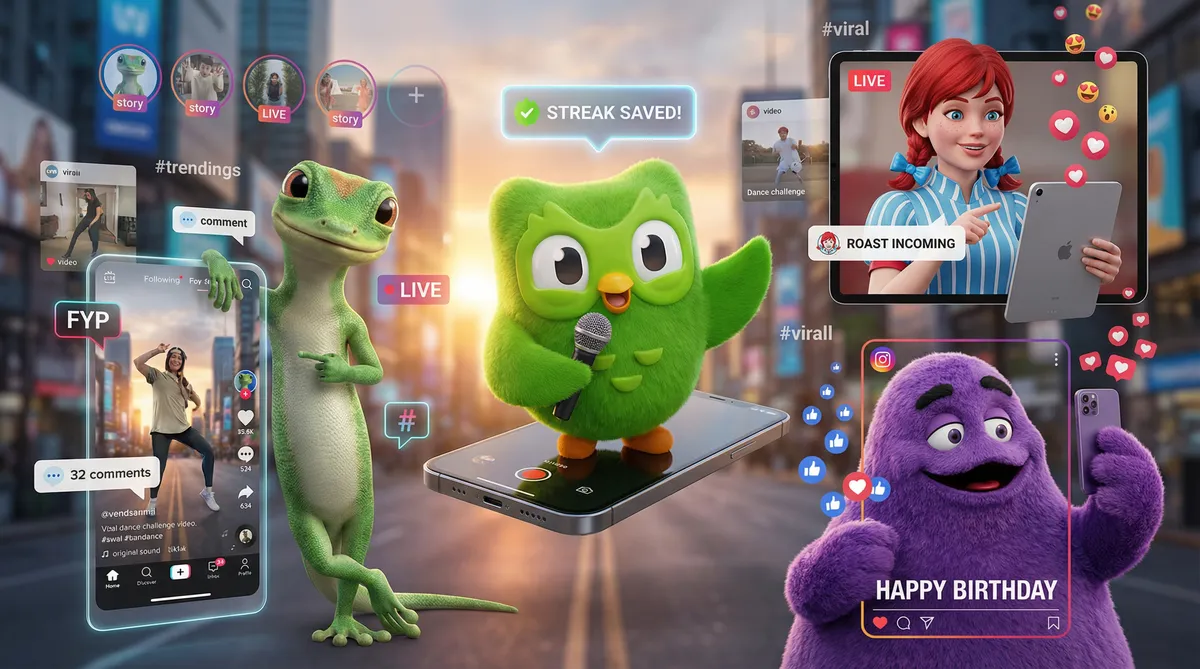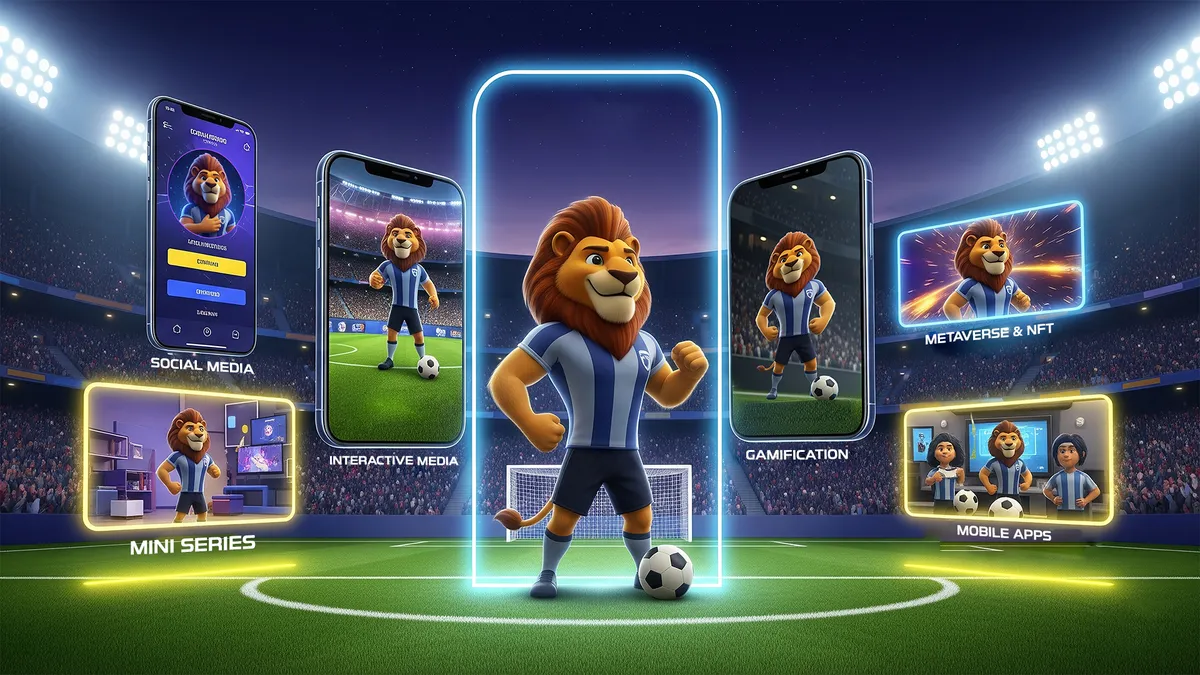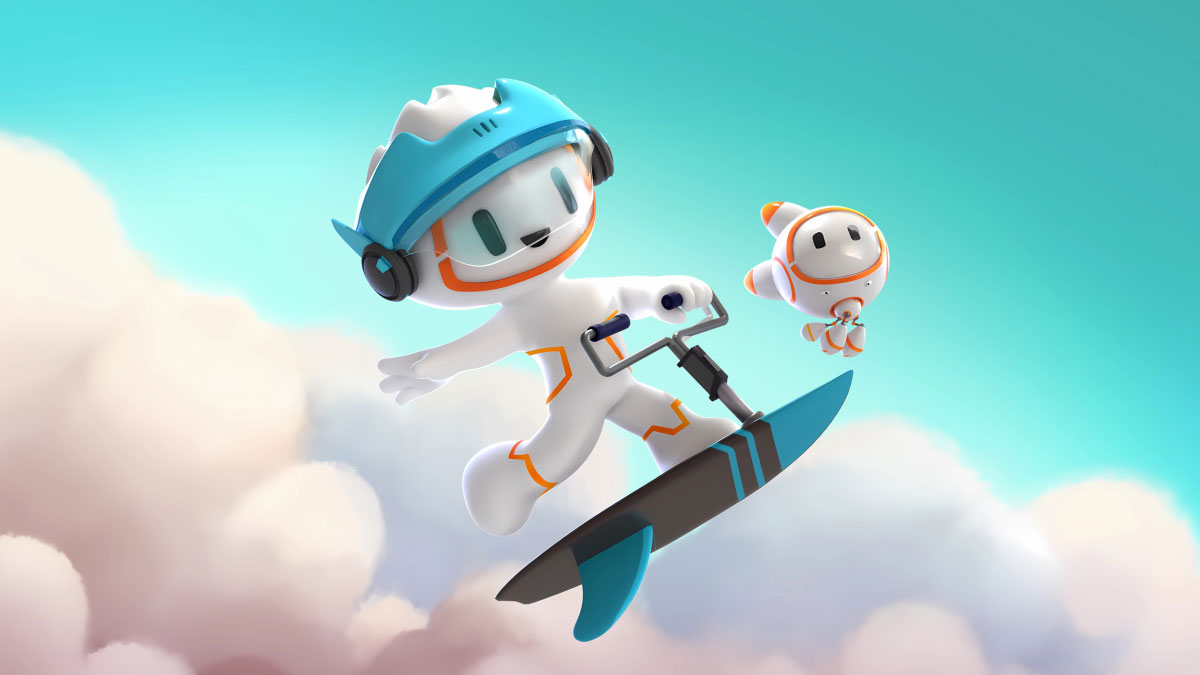
Let’s bust a myth right out of the gate: brand mascots aren’t just for flashy consumer brands. Not even close. In fact, when done right, mascots can seriously move the needle for B2B companies too—boosting everything from engagement to recall and even lead conversion.
In this article, we’re unpacking the key differences between B2B and B2C mascots. To fully appreciate that comparison, it helps to first have a solid grasp of what brand mascots are in general, which our main guide covers in depth.
Still skeptical? Totally fair. A lot of folks question whether mascots really work for industries that aren’t selling snacks or sneakers.
So let’s clear that up before we go any further.
Can B2B Brands Really Win with a Mascot? Absolutely
Let’s face it—every business wants to stand out in a crowded market. And B2B companies? No exception. The truth is, a well-designed brand mascot can be one of your most powerful tools to cut through the noise, connect with customers, and drive serious growth.
So why do so many B2B leaders still skip them?
Many believe mascots are only for B2C brands with cute logos and playful taglines. They assume B2B buyers only respond to “professional,” buttoned-up marketing.
But here’s the kicker: it’s just not true.
Take a look at the facts:
- Mascot-driven campaigns boost market share, win new customers, and lift revenue.
- Stick with one long enough, and you could see profits jump by up to 31%.
- Mascots increase ad recall, emotional connection, and engagement—all the stuff B2B marketers dream of.
Still think mascots are too “fun” for B2B?
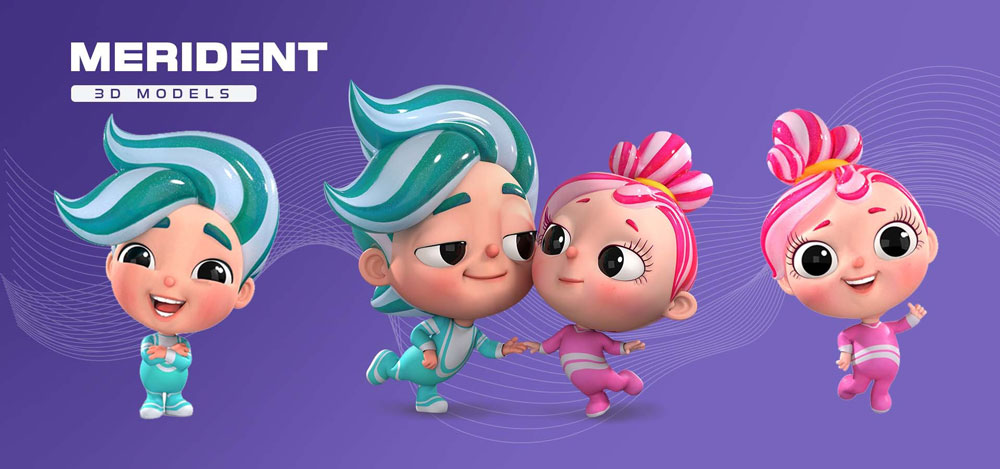
Here’s something to chew on: your customers might sit behind corporate emails and procurement forms, but at the end of the day, they’re still human. And get this—research shows B2B buyers often lean on emotions even more than B2C consumers when making decisions. Shocking? Maybe. But it changes everything.
So yes, a strategic, well-developed mascot can humanize your brand, spark emotional loyalty, and earn you real results.
We have examples of successful B2B mascots that you can use as benchmarks. Check out our full breakdown in “B2B Brand Mascots” for the complete story.
Now, let’s get into what makes B2B and B2C mascots tick—and how they differ.
How Should a B2B Mascot Really Look and Act? Here’s the Breakdown.
B2B mascots aren’t just toned-down B2C mascots in suits. They’re a whole different breed—with their own job to do and a totally different crowd to win over. Let’s break down how these two types of mascots stack up, trait by trait.
Tone & Personality
We’ve all seen those loud, playful B2C mascots—the ones that crack jokes, dance on screen, and wave giant foam fingers. And for consumer brands, that works. They’re trying to win attention fast.
But when it comes to B2B, the vibe shifts. You’re speaking to execs, decision-makers, people managing big budgets. Your mascot can’t just be cute—it has to feel credible.
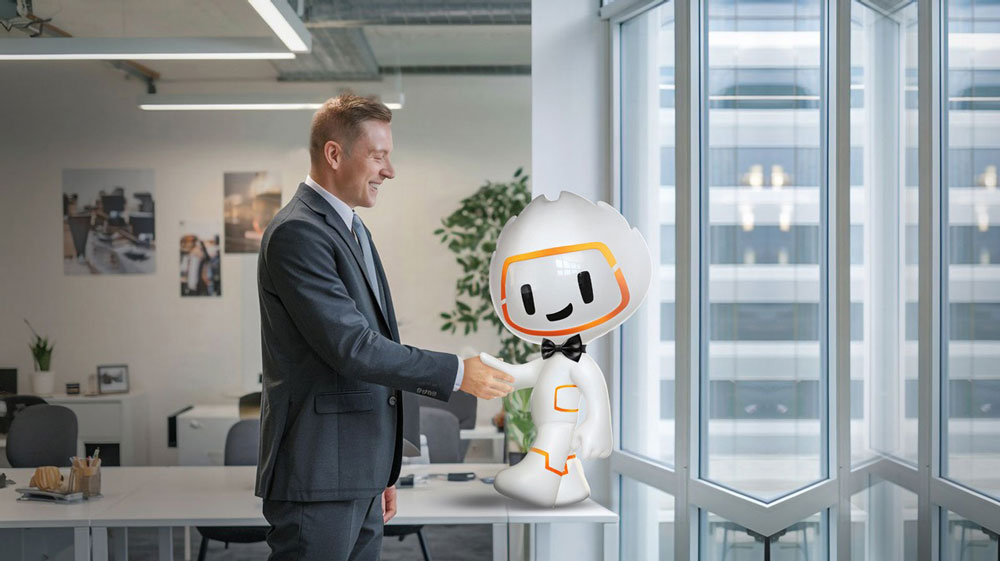
Think: warm, trustworthy, and smart—but with just enough charm to break through the corporate noise.
Messaging Style
B2C mascots push quick decisions. “Buy now!” “Try this!” Boom—done.
B2B mascots? They’re in it for the long game. They build relationships. They simplify big, technical concepts. They bring clarity to complex products.
So instead of hard selling, they say:
“Here’s what we do. Here’s why it matters. Let’s grow together.”
They speak logic with a dose of emotion. And that’s exactly what B2B buyers respond to.
Where They Show Up
Sure, B2C mascots are built for the spotlight—TV ads, viral TikToks, Super Bowl cameos.
B2B brand mascots can also have a presence across all channels, including being featured in B2B-specific platforms and content.
You’ll find them in:
- Sales presentations
- Email campaigns
- Whitepapers
- Webinars
For example, in the video below, you can see how the mascots designed by Dream Farm Agency have been used in B2B conferences.
They pop up exactly where your target audience is already paying attention. That’s the strategy. Not splashy—just smart.
Visual Design & Brand Fit
For B2B mascots, alignment is everything.
The design needs to embody your brand values—not just “look cool.” That means your mascot should feel like a living, breathing version of your business.
Modern and trendy? Fine. But it must reflect your industry, tone, and credibility at first glance.
The goal? When someone sees your mascot, they instantly think: Yes, that fits. That’s exactly who they are.
Internal Buy-In: The Real Challenge
Launching a B2B mascot isn’t always smooth sailing.
Unlike consumer brands, where a mascot can go viral overnight, B2B teams sometimes hesitate.
“Will this hurt our image?”
“Is this too playful for our market?”
Fair questions. But here’s the reality: studies show that mascots boost brand recall, engagement, and even profits for B2B brands—often just as much (or more) than for B2C.
Many brands are already struggling to maintain a presence on social media—a space where visibility depends on creating engaging, short videos, sometimes exciting videos, and jumping on meme trends. But brands can’t behave like a 20-year-old influencer online.
B2B brands face even greater challenges, as they must also find and connect with their customers in this crowded, fast-paced environment.
It’s not about being silly. It’s about standing out while still standing strong and professional.
Can You Combine B2B and B2C Mascots?
Short answer: yes.
But let’s unpack that, because if your business serves both companies and consumers, this gets really interesting.
Some brands live in both worlds. They sell to business clients and everyday consumers. So naturally, they need a mascot strategy that works across that spectrum—or multiple mascots that each hit the mark. Here’s how they usually play it:
Option 1: Two Mascots, Two Audiences
You build two separate characters—one for B2C, one for B2B.
Each one is tailor-made for its audience:
- The B2C mascot brings the fun, energy, and emotion regular shoppers love.
- The B2B mascot raises the bar in professionalism, trust, and clarity—ideal for decision-makers and buyers.
Our collaboration with Sungrow, the world’s leading supplier of photovoltaic (PV) inverters, is a clear example of how a brand mascot can serve both B2B and B2C goals. With Sungrow’s reach spanning from household consumers to industrial clients across 170+ countries, we developed two characters—Young Yang and Bubbly—that could engage technical audiences while remaining friendly and emotionally resonant with the public.
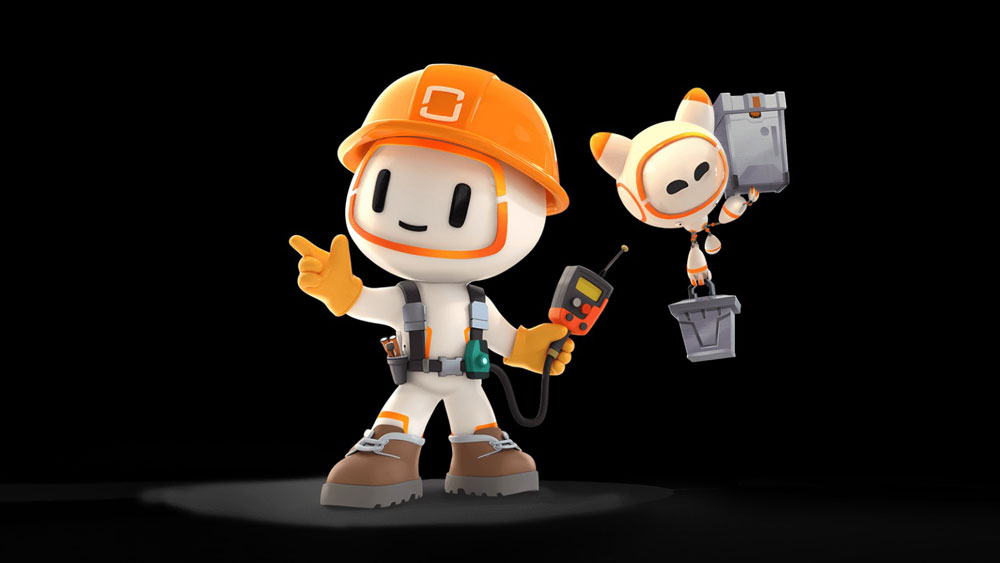
Young Yang, a heroic engineer powered by a sunlight photon, symbolizes clean energy and innovation, making him ideal for professional and educational content. Bubbly, a playful robotic kitten with projection capabilities, adds charm and adaptability, supporting consumer-facing campaigns. Together, they help Sungrow humanize complex technology and unify their brand voice across diverse markets.
Sounds like more work? Sure. However, it pays off when your audience feels like you’re speaking directly to them.
Option 2: One Hybrid Mascot for All
Some brands go the other route. One mascot, two personalities.
This hybrid character shifts gears depending on who it’s talking to:
- Professional and knowledgeable when speaking to businesses.
- Friendly and playful when addressing consumers.
Pulling this off takes finesse. But if done right, it builds brand consistency while still resonating with two very different audiences. Think of it as the mascot version of code-switching—versatile, sharp, and totally on-brand.
So, Which Strategy Wins?
Honestly, there’s no one-size-fits-all answer.
Your best move depends on how different your audience groups are, your internal resources, and the story you want your brand to tell.
But here’s what we do know:
If you’re working across B2B and B2C, you absolutely should be thinking about mascot strategy. Ignoring one side of your audience means missing out on a huge opportunity to connect—and convert.
Up next? Let’s bring it all home with a final wrap-up.
We Build B2B and B2C Mascots That Actually Work
Whether you’re running a B2B powerhouse or a consumer-facing brand, we’ve got the tools—and the talent—to create a mascot that fits your identity perfectly.
At Dream Farm Agency, we don’t believe in cookie-cutter characters. Our brand mascot development team, including experienced artists and tech-savvy designers, builds every mascot from the ground up, developed to reflect your values, voice, and audience.
Let’s be blunt: winging it with amateur designs will cost you Time, money, and trust.
This is high-impact brand work, and it deserves expert hands.
That’s why leading brands have trusted us—and kept coming back.
Want a mascot that does more than look good? One that actually connects, converts, and gets remembered? Contact us.
Nikan
